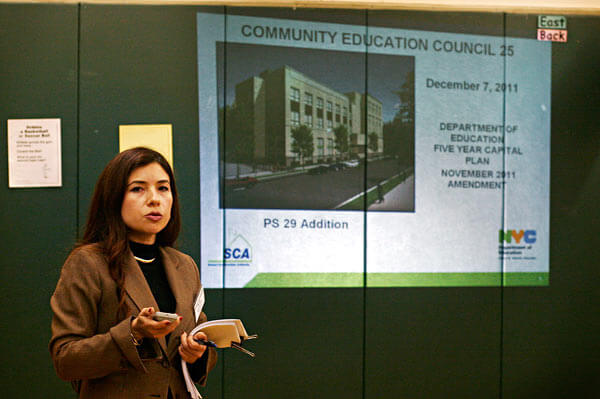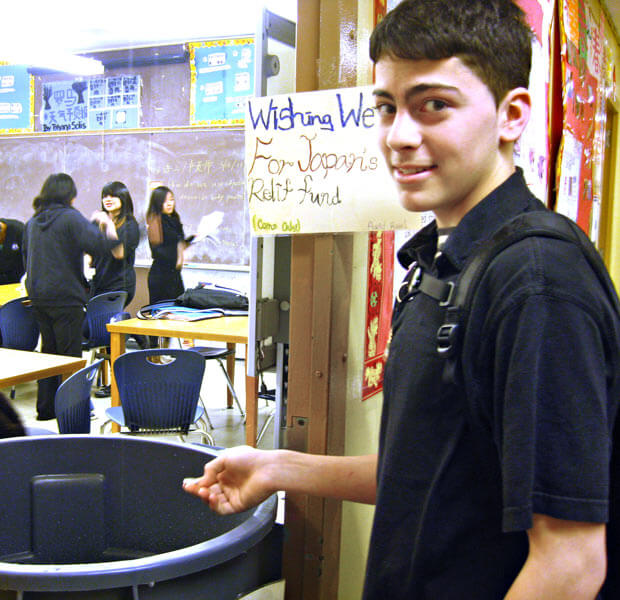By Joe Anuta
Students at a Flushing school responded to leaky ceilings last year by converting drip-catching buckets into wishing wells.
But last week at an education meeting in northeast Queens, their principal expressed his own wish: The city School Construction Authority should patch his porous roof.
“Today we sprung three new leaks,” said Benjamin Sherman, speaking at a Community Education Council District 25 meeting Dec. 7. “Please fix our roof.”
Sherman is principal of East West School, which is in the same building as IS 237 at 46-21 Colden St. His students started the wishing wells — which were placed under leaks in classrooms, hallways and even his office — as a joke in response to the multiple leaks throughout the school, which is on the top floor of the building..
The good deed was a creative way to turn around a bad situation, but Sherman said buckets were ridiculous for a New York City school.
“It’s embarrassing,” he said, echoing the anger of many parents and council members at the meeting who were dissatisfied with the disrepair in schools and how the city goes about fixing them. “It’s 2011 and children have to navigate around buckets.”
Sherman addressed his comments to Monica Gutierrez, who was giving a presentation on an update to the city’s five-year capital plan for District 25, which encompasses the neighborhoods of Flushing, Whitestone, College Point, Bay Terrace, Auburndale and Murray Hill, as well as parts of Bayside and Fresh Meadows.
While Sherman and other educators lamented the state of their schools, he also conceded the city must operate on a limited budget.
Gutierrez told the few parents at the meeting that the authority does not have the money to repair every school in the district.
In June 2009, the city had originally adopted a citywide 2010-14 capital plan of $11.3 billion — $2 billion short of the previous plan, according to the city Department of Education. And three subsequent amendments have reduced it even further.
Rising construction costs and a growing student population combined with aging infrastructure have also cut the authority’s power to make repairs, the DOE said.
When parents and board members inquired about capital improvements at last week’s meeting, Gutierrez said different tiers of capital projects exist. For minor repairs, the janitorial staff at the school has a budget to contract out work like patching leaks.
For non-structural needs like libraries or computers, schools can appeal to a local city council member for funds that are allocated yearly.
But for large-scale projects like brickwork or roofs, the authority takes the worse cases first, the DOE said.
And according to one board member, this means that a school with significant damage might not be repaired for years if there are other schools in worse shape.
The authority’s plan called for several million-dollar improvements at schools around District 25.
JHS 168, at 158-40 76 Road, is slated to receive $13 million total in improvements, according to DOE documents.
A new science lab was started in 2011, and the school will get other structural upgrades in 2012, according to the DOE.
PS 154 is set to receive a total of $8 million in structural and electrical improvements, and a new addition to PS 29 is slated to open next year, the DOE said.
Reach reporter Joe Anuta by e-mail at januta@cnglocal.com or by phone at 718-260-4566.


































